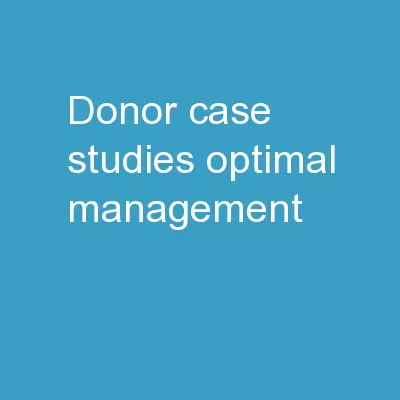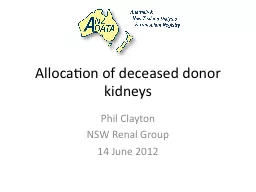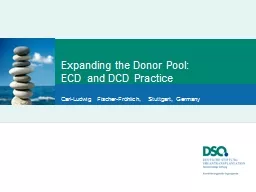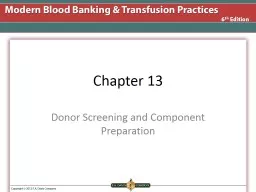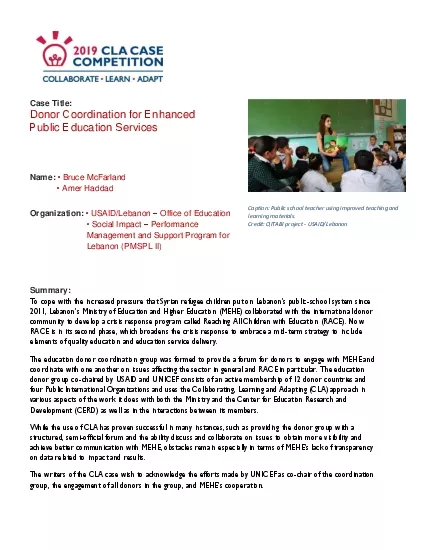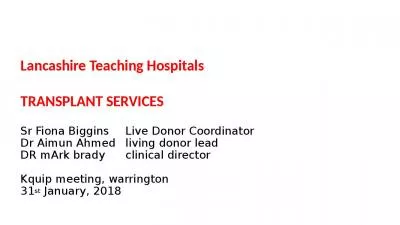PPT-Donor Case Studies Optimal Management
Author : pamella-moone | Published Date : 2018-11-08
HarborUCLA Critical Care Organ Donation Symposium April 12 2010 Brant Putnam MD FACS Trauma Acute Care Surgery Surgical Critical Care HarborUCLA Medical Center
Presentation Embed Code
Download Presentation
Download Presentation The PPT/PDF document "Donor Case Studies Optimal Management" is the property of its rightful owner. Permission is granted to download and print the materials on this website for personal, non-commercial use only, and to display it on your personal computer provided you do not modify the materials and that you retain all copyright notices contained in the materials. By downloading content from our website, you accept the terms of this agreement.
Donor Case Studies Optimal Management: Transcript
Download Rules Of Document
"Donor Case Studies Optimal Management"The content belongs to its owner. You may download and print it for personal use, without modification, and keep all copyright notices. By downloading, you agree to these terms.
Related Documents

